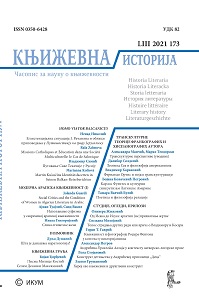Топос страдања других ради или повест о Владимиру и Косари
The Topos of Suffering for Others’ Sake, or the Story of Vladimir and Kosara
Author(s): Snežana J. MilojevićSubject(s): Serbian Literature
Published by: Институт за књижевност и уметност
Keywords: Vladimir and Kosara;suffering for others’ sake;Holy Scripture;intertextuality;
Summary/Abstract: Considering how topoi, or commonplaces, in medieval literature are not seen as banal but as a recognized form of typified actions and do not diminish the author’s inventiveness, we explored the topos of suffering for others’ sake in a hagiography dedicated to Jovan Vladimir, an integral part of The Chronicle of the Priest of Duklja. Our methodological framework was based on an approach accepted in medievalist studies, which involves the use of a theological framework. Thus, we searched the New Testament for the architext of the narratives found in this hagiography. Thus far, domestic scholars have paid more attention to the holy knez than to the holy kneginja, whereas our insight suggests that the spiritual kinship of these two beings is highlighted using the same elements of characterisation. The enlightenment of both (coming from the Holy Spirit) is emphasized; both are ready to lead a life of asceticism; both are willing to make sacrifices for the sake of others (for greater good), owing to which they both take on the role of the Good Shepherd. Speaking of intertextuality, we point to the narrative strategy of identifying the suffering of Jovana Vladimir with the suffering of Jesus Christ, as seen through the actions of the main character, as well as the reactions of his loved ones to his appearance. On the other hand, the willing acceptance of God’s plan, as exemplified by the character of Kosara, mirrors the actions of the Mother of God, as described in the Gospels. In accordance with that, the hagiography of the holy knez contains the motif of the betrayal, which we discuss on an individual level, through the character of the župan of that place, but also on the collective level, when both the secular and church community, abstaining from any reaction, participate in the suffering of the innocent. The symbolism of the cross occupies an important place in this hagiography. The wooden cross on which the Son of God himself suffered stands in opposition to the golden cross, paradigmatic of the sinful man, in this case Emperor Vladislav, the slayer of the innocent. All the features fundamental to the heroes of the hagiography are a clear evidence of their holiness, and their orientation to the Logos does not impinge on the loyalty they have to one another, the two really being one and the same, as the feat of absolute and unconditional devotion to one another is in itself an act pleasing to God.
Journal: Књижевна историја
- Issue Year: 53/2021
- Issue No: 173
- Page Range: 287-301
- Page Count: 15
- Language: Serbian

